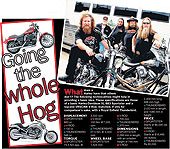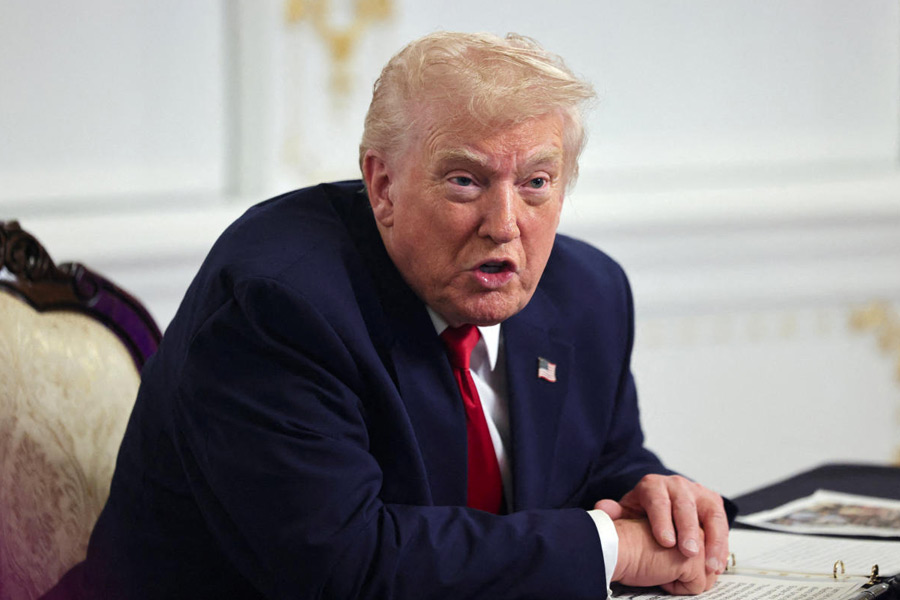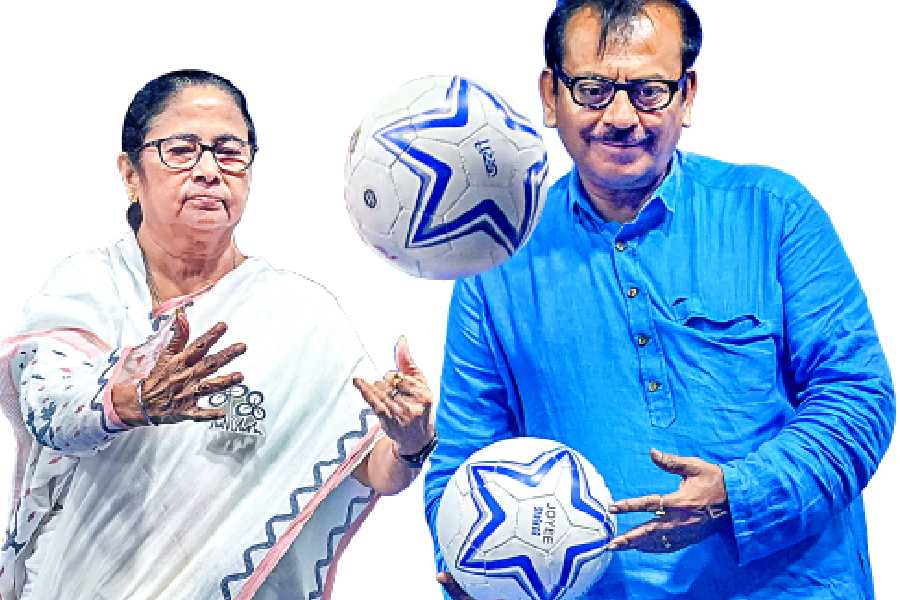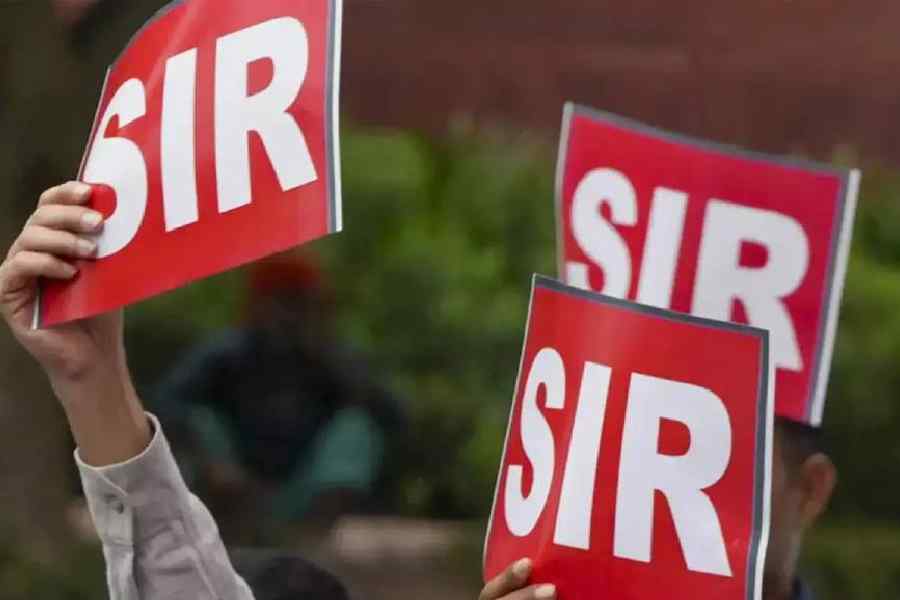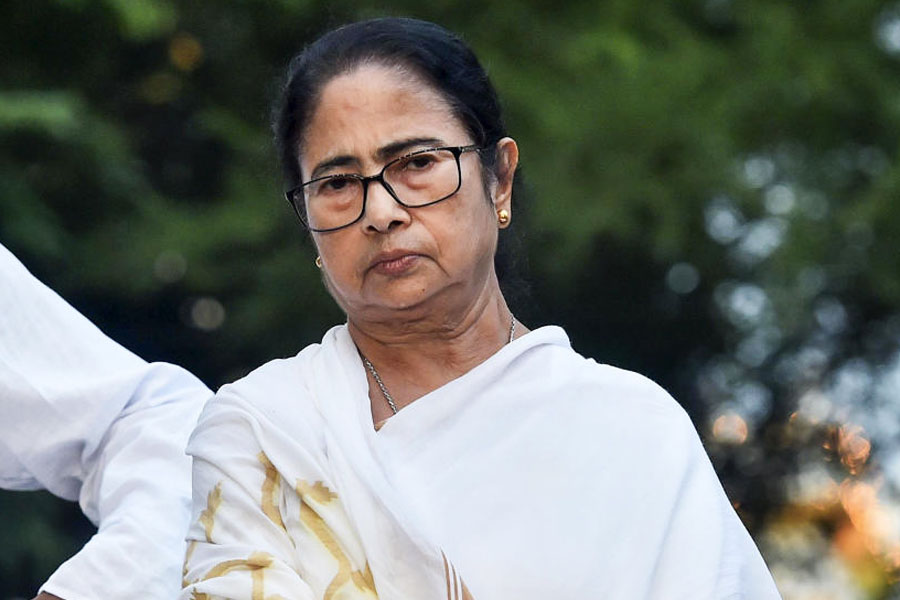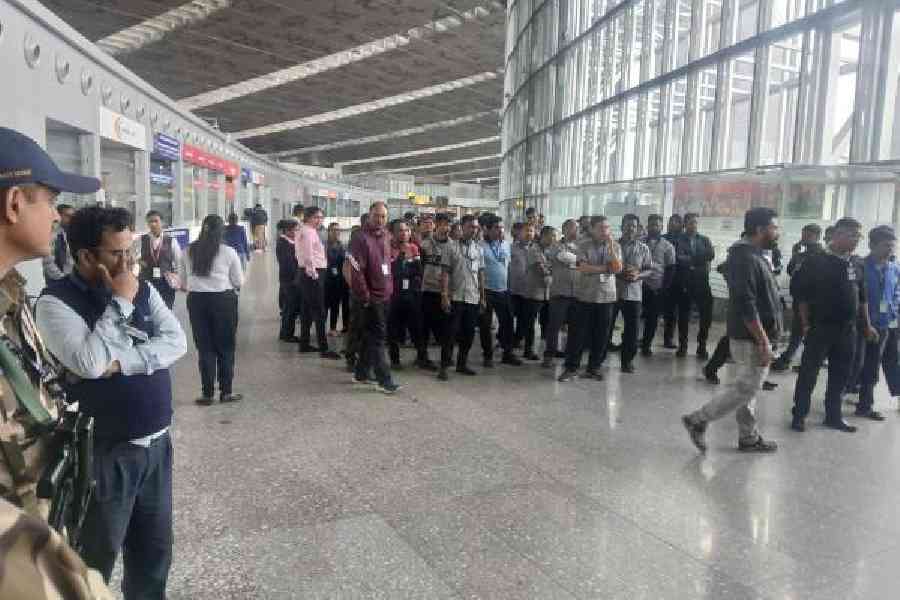 |
Some experiences in life can’t be expressed in absolute words. Like that of riding a Harley. Rajeev Khanna nonetheless gives it a shot, but his emotions prevent him from getting past the usual array of stock phrases. “It’s got a special feel to it,” confides the veteran rallyist about his 1992, 1340 cc Fatboy. “I ride it around town pretty much every day... it makes for such comfy riding, you see. Or maybe it’s the sound,” he says on second thoughts. “There’s nothing sweeter to the ear than the sound of a Harley.”
Khanna stops short of going into an onomatopoeic overdrive to try and explain exactly what the sputtering of a classic Harley-Davidson V-twin engine might sound like. But Khanna perhaps doesn’t need to. Self-respecting bikers in India can now look forward to sampling first-hand the resonance of the pistons, if not riding the mean machine a la Arnold Schwarzenegger in Terminator II, or Peter Fonda and Dennis Hopper in the 1969 film Easy Rider.
Clearly, Harley-Davidson’s official arrival in India would put an end to a long wait on the part of several Indian motorcycle fanatics who have always dreamed of possessing a Harley but have never got the chance to actually own one. Harleys, after all, never retailed in India. Many of them came into the country as vehicles in combat service during the days of World War II. After the war, they were sold to local customers who in turn bequeathed them as heirlooms through successive generations.
In recent years, if one wanted a new model, the only option was to buy one abroad and ship it back to India. But that was a tedious and expensive process and if one wasn’t a Sanjay Dutt or a Pervez Damania the thought of owning a Harley-Davidson wasn’t likely to cross one’s mind.
Change, however, is on the cards. The Indian government, which earlier stood its ground on stringent emission norms, has softened and allowed the Harleys to sell in India as long as they conform to Euro III standards. Harley probably couldn’t be happier. Indian auto experts hold that the company has been studying the Indian market for the past few years, hoping to make an entry. The time for them to roar into India could well be now.
officially, though, Harley-Da- vidson isn’t giving away any of its plans for India. “While India has agreed to adopt the Euro III emissions standard, the 60 per cent tariff on motorcycles, on top of a 30 per cent tax rate, remains a major barrier,” says Bob Klein, head of corporate communications, Harley-Davidson. “Harley-Davidson continues to lay the groundwork for possible entry into the Indian market should the trade barriers be resolved. And we will have more details at the appropriate time.”
Nonetheless, that hasn’t stopped the auto fraternity in India from talking. And a Harley, needless to say, does invite a lot of discussion. Some have begun to drool at the prospect of being able to walk across to the nearest showroom and ride out on a Hog — a term first used for the machine after a group of racers in the 1920s rode Harleys with a pig as their mascot, and popularised later as an acronym for the Harley Owners’ Group. “I’d certainly like to own one of the first Harleys that get shipped in,” says auto designer Dilip Chhabria. “I would love to cruise on one,” he says.
Of course, that’s possible only if one has pockets deep enough to afford it. Despite being allowed into India, the 121 per cent import duty on Harleys has not been waived. So buyers could expect to pay anything from Rs 6-7 lakh for a basic XLH 883 Sportster cc to Rs 15 lakh plus for an advanced FLSTF Softail. S. Sen, director, Society of Indian Automobile Manufacturers (SIAM), however, points out that the final price of a Harley, when it does market in India, may vary from the indicative prices that they sell at in US markets. “As a company, it can choose to increase or decrease the price of its bikes in a new market.”
But will the coming of the Harley — hailed as the ultimate cruiser motorcycle the world over — spell doom for the home-grown Royal Enfields which for years have enjoyed iconic status among Indian bikers? Not really. The Harley and the Enfield clearly belong to different leagues. While the Harleys would come for several lakh rupees, a 350 cc Enfield Bullet, sold as a ‘stock bike’ in India, retails for about Rs 75,000. If Enfield sells about 34,000 bikes in India every year, experts peg the expected annual sale of Harleys to about 80-100 at the most.
R.L. Ravichandran, CEO, Enfield India, points out that Royal Enfields have been exported to several European countries where Harley-Davidson already has a presence. “The two have been co-existing in these countries for decades,” says Ravichandran. “In India, too, there will be a respectable co-existence,” he adds.
While it may not face any competition from cruisers in India, many, however, believe the Harley might have to fight it out with high-end Japanese or European bikes that are often desired by India’s generation next, sometimes over the Harley. “It’s retro and appeals primarily to the older generation,” notes Chhabria of Harley’s design. “My son preferred a (Honda) Goldwing to a Harley since he considered a Japanese sports bike sexier than an old-fashioned cruiser.”
There are practical issues too with a Harley that may take the sting out of its appeal once Indian bikers come face-to-face with them. “Being a heavy motorcycle, a Harley makes for difficult handling on curved roads,” notes Adil Jal Darukhanawala, auto expert and editor, Bike India, with the experience of a handed-down Harley behind him. “It’s one reason Harley has never done well in Europe, where there are no roads as straight as the American Interstates,” he says.
figures only second Daru-khanawala’s observation. Through 2006-07, Harley-Davidson sold only about 7,000 of its motorcycles in Europe versus nearly 57,000 in the US.
There is also the all-important question of fuel efficiency. A VRSCAW Street-Rod, going by the company’s own specifications, gives only about 20 km to the litre on the highway. Pit that against an extra 10 km, at least, that one could get out of an Enfield. “It’s a Catch-22 situation, really,” says Kartik Krishnan, biker and founder member of the Delhi-based riding outfit Royal Beasts. “Personally, I look forward to buying a Harley for what it symbolises, but when it comes to long-distance cruising I might still ride my Enfield Thunderbird, simply because I’d be saving a lot on gas,” he says.
Krishnan’s sentiments effectively reflect the paradox that has been associated with Harley-Davidson all throughout. On the one hand, people want it for its sheer appeal and the concept of riding easy and living free that it symbolises. Not to mention the oodles of machismo that it brings along with it. “Every true-blue biker wants to own a Harley for what it does to his ego, if not anything else,” says Darukhanawala.
On the other hand, people treat it as little more than a white elephant, demanding meticulous maintenance. But then, it’s this very handicap that seems to work to Harley’s advantage, as it has done through history. “Despite being an old tech machine, the Hogs have a huge fan following in India,” says Ranojoy Mukerji, editor, Autocar India. “Isolated incidents (of mechanical problems) wouldn’t bear in people’s minds when they want to buy a Harley. The Harley is a cult machine. It’ll have a niche presence in India, as it has had globally. It’ll ride happily on our roads.”
Kartik sums it all up for the road. “To sell, the Harley has to outgrow the definition of a motorcycle,” he says. “It has to position itself as a status symbol, an expensive fashion accessory that one rides to a social do. But for all practical purposes, it’ll probably be limited to just a weekend indulgence,” he says.

